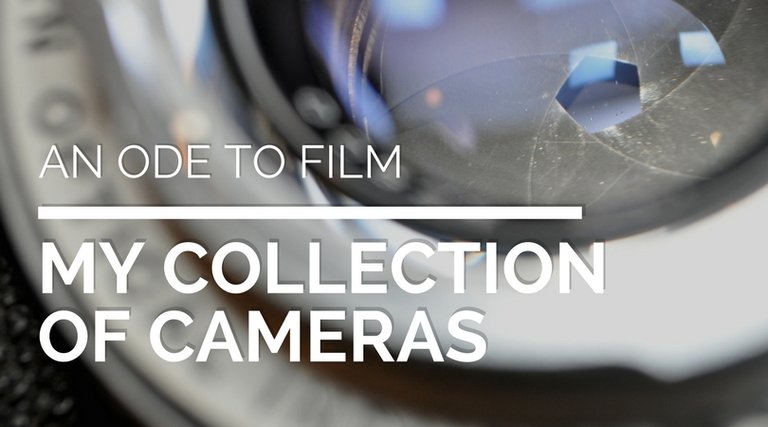
I’ve shared the camera that started it all for me; now it’s time to show you a couple of the more unique cameras I own.
RICOH DIACORD

This is a Twin Lens Reflex (TLR) medium format camera. The leather carrying case is a little rough from years of use, long before I acquired it at the turn of the millennium, but the camera is still a magnificent workhorse.
Unlike Single Lens Reflex (SLR) cameras, like the Nikon FE2 featured in my last Ode to Film, TLRs have two lenses that serve different purposes. If you recall, an SLR lets you view through the lens via a mirror and prism directing the image to an eyepiece. When you activate the shutter, the mirror moves out of the way to expose the film as the shutter opens, meaning you lose your view of the subject while the film is exposed.
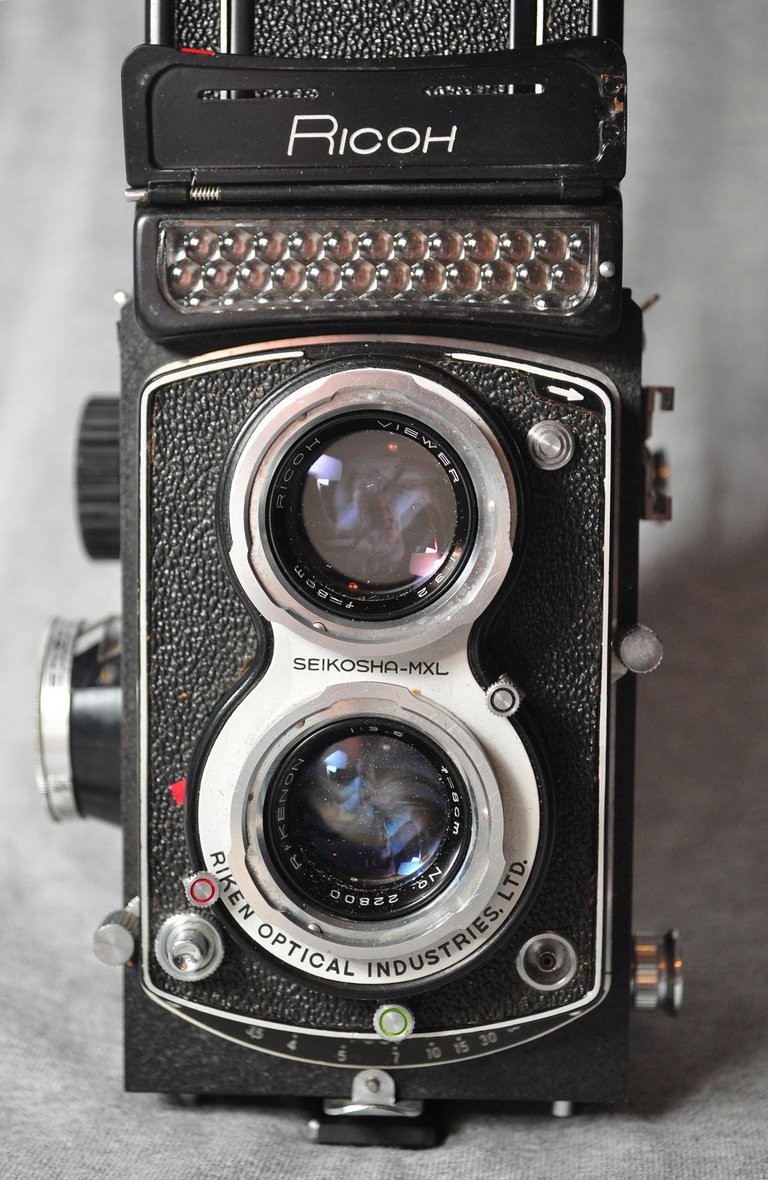
Both lenses on a TLR are the same focal length and mounted to the same focal plane. The top lens bounces the image off a mirror onto a piece of projection glass on the top of the camera. A hood pops up around the viewing glass to protect it from ambient light, allowing you to view the image for composition and adjusting focus.
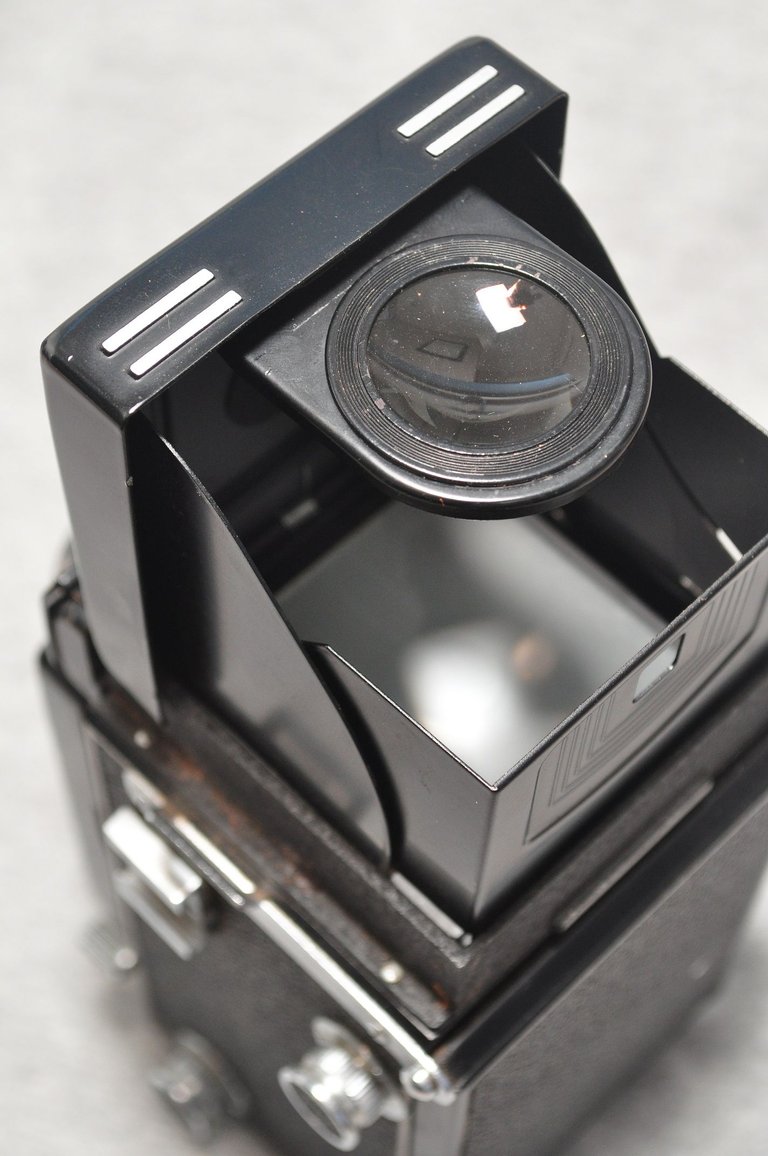
The bottom lens directs light to the film plane when the shutter is activated. 35mm film cameras typically have a curtain shutter—a series of horizontal leaves at the film plane that retract up—but this camera uses an iris shutter inside the lens. The separate lenses means your view is never interrupted, even during exposure.
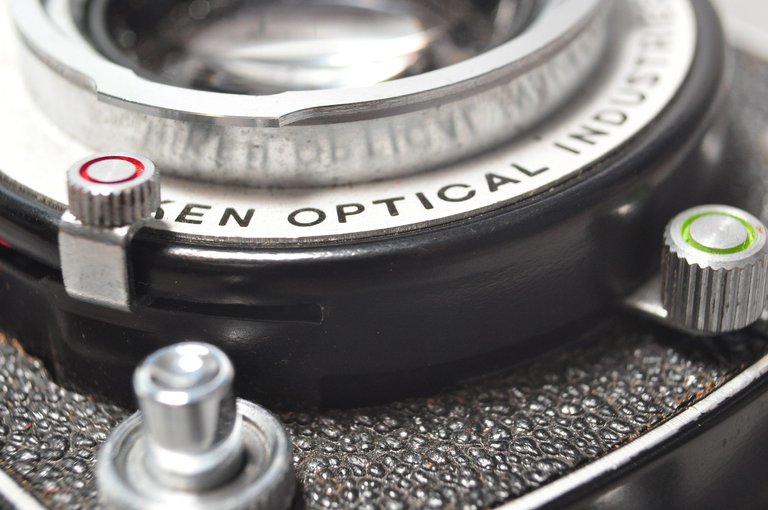
Using this camera is just plain fun. Everything is adjusted with levers: thumb rockers on either side of the lens plate adjust focus, aperture and shutter adjustments slide around the lens. Your exposure settings display on a gauge atop the lenses, visible to the photographer while looking at the focus screen.
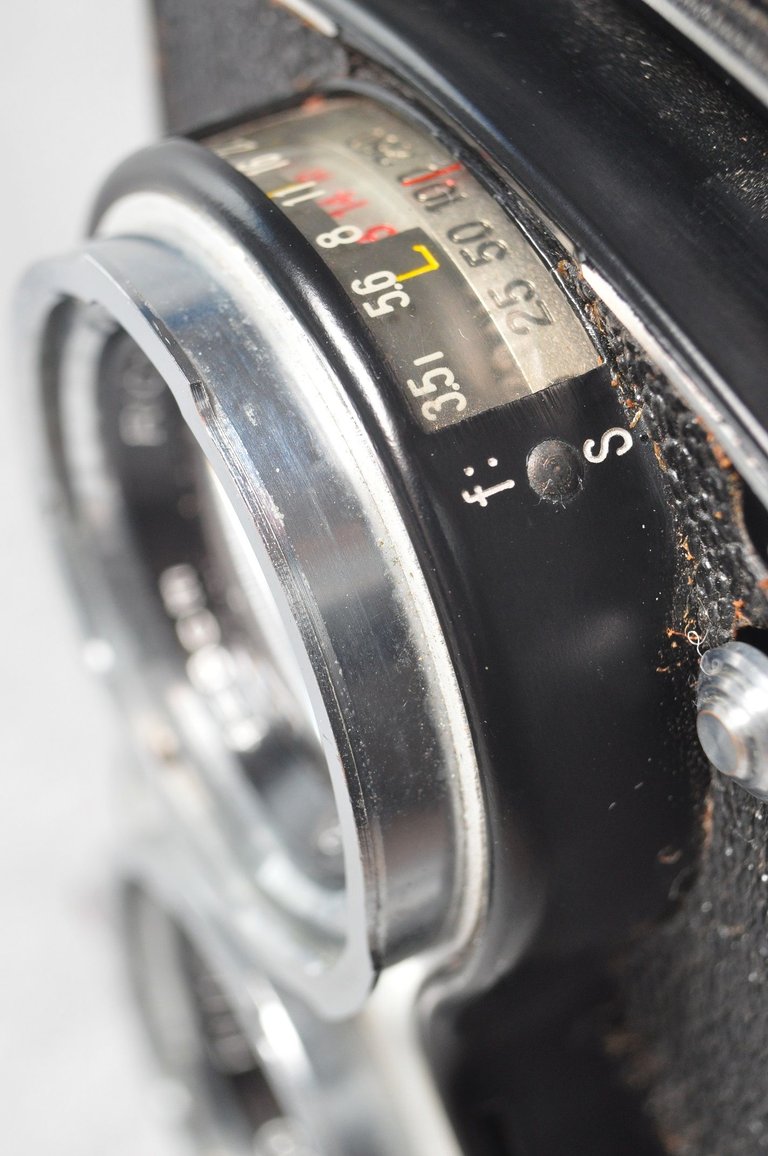
Between the readings for aperture and shutter speed is a red number. This corresponds to the light value shown on the meter at the side of the camera. The light sensor above the lenses controls the red needle on the light meter, providing a light value reading.
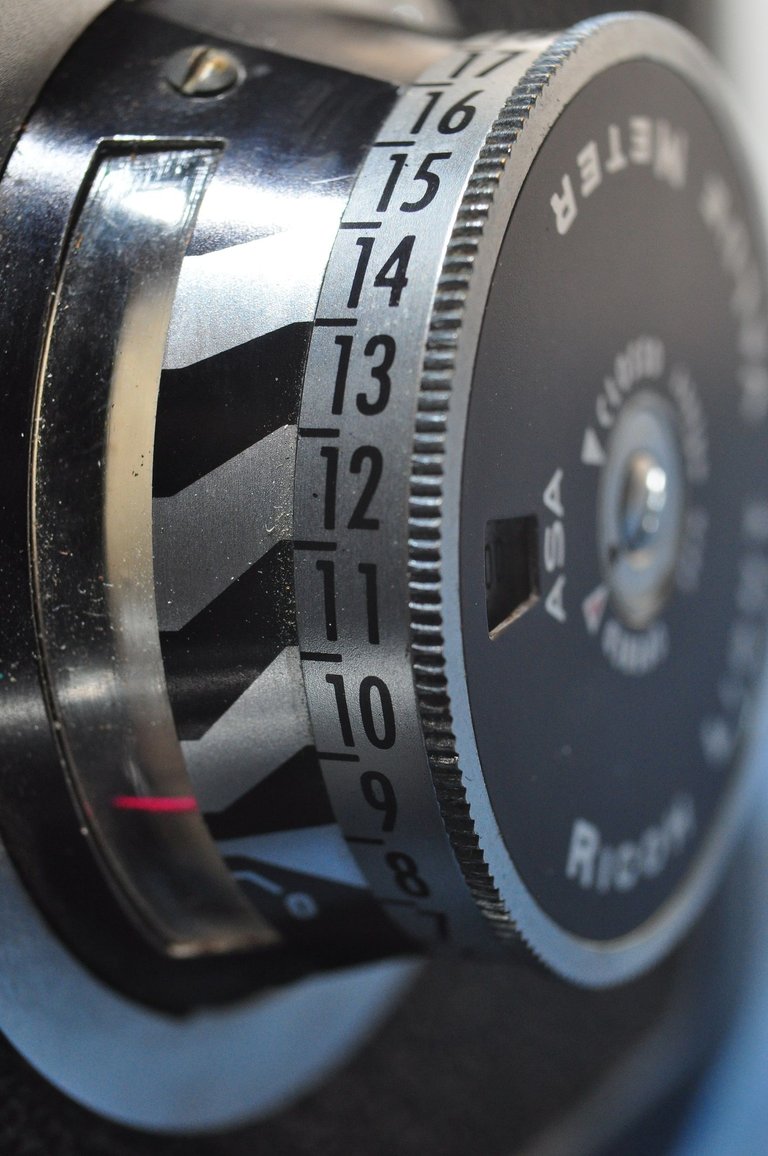
Your film speed setting determines the placement of the light value numbers along the gauge. The corresponding red number on the settings display indicates the shutter speed and aperture combination that will give you a middle grey exposure. It’s a really clever system and works well for a built-in camera meter.
So maybe you’re asking, “other than looking funny and being fun to use, what’s the big deal about this camera?” Well, the medium format film used by this camera offers a considerably larger frame than 35mm. It’s a crude comparison, but if 35mm is equivalent to 20 megapixels, then medium format is 400 megapixels. You can see why some professional photographers still use medium format film, as even the highest grade professional DSLR doesn’t offer such high resolution.
Also, medium format made square frame photos cool way before Instagram.
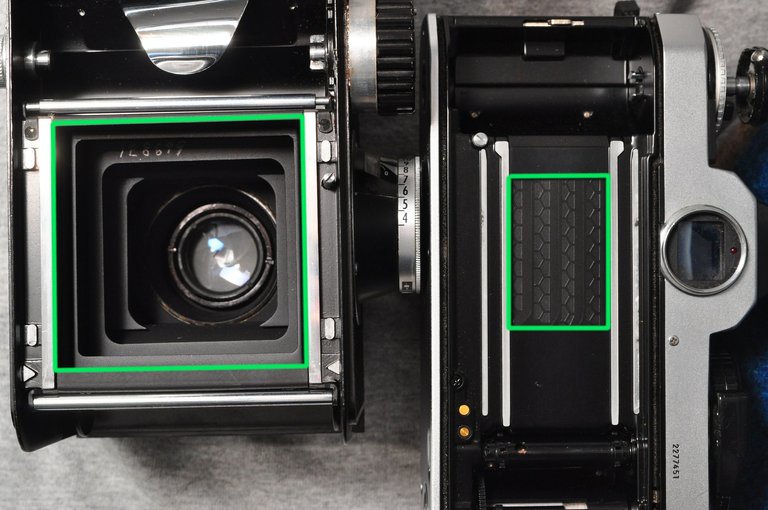
Green lines added to highlight the size of the film frame.
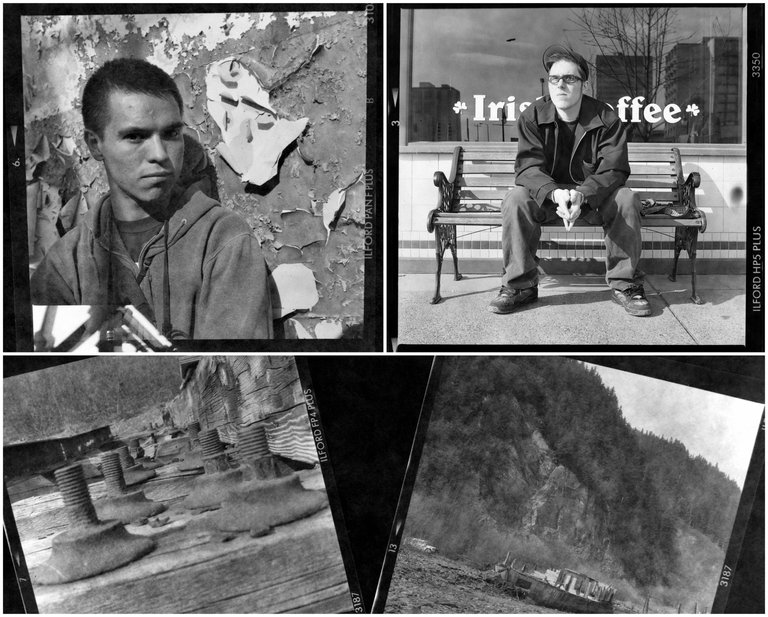
More of my shoddy digital negative transfers. The fun thing about this collage is you can see the different contrast characteristics for three different types of film. I remember loving that ILFORD HP5 PLUS.
POLAROID SX-70
The next camera I’d like to share is very out of the ordinary. The Polaroid SX-70 was released in 1972 and became extremely popular. It looks like it could be a prop from an old science fiction TV show. It collapses, making it very portable, and provides instantly developing images from preloaded cartridges.
To deploy the camera, you grasp the top portion and pull up, revealing the viewfinder section.
Moving your grip to the rear part of the viewfinder, you can pull the camera fully open, revealing the lens and controls.
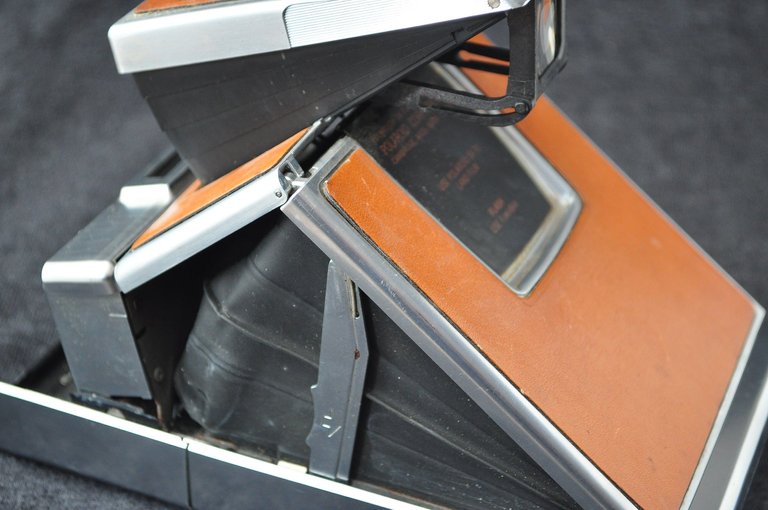
The camera folds back up just as easily as it opens: push back on the metal support bar and it folds right up. A small red button on the other side of the frame drops the front section, allowing you to load a film cartridge.
The form and function of this camera is enough to make it special, but there’s an amusing bonus: the protective covering on the emulsion prevents the picture from fully curing for a long period of time. This means you can manipulate the images after they spit out the front of the camera, drawing on them with a pointed object.
Unfortunately, I don’t have any examples of my own to share, since the instant developing and sketch-like manipulation made it enjoyable to give the pictures away or post them up on the photoroom corkboard.
Polaroid ceased production of the film cartridges for a long period of time, meaning they were only available on secondary markets at incredibly inflated prices. However, it seems Polaroid has recently restarted production of eight-photo film packs for the SX-70, but the price is still pretty steep. I haven’t tried out the current version of the film, so it’s unknown if the modern chemistry provides the same ability to modify the images.
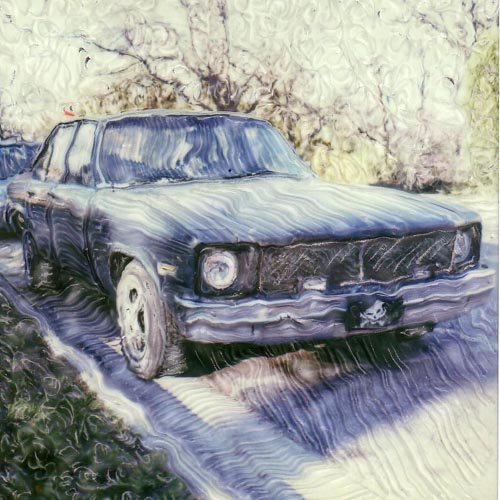
A modified SX-70 image from WikiCommons
I hope you enjoyed this look at a couple of wonderful cameras that offer a different photography experience. Since I don’t process my own film anymore and the cost of SX-70 cartridges is high, I don’t utilize these cameras anymore. Perhaps I will someday. I especially long to use the medium format again. Pushing the colors and drawing on the image of an SX-70 picture is also a lot of fun.
The next time I’m feeling nostalgic and conjure up another Ode to Film post, I’ll share about how my love of photography transitioned into the realm of cinematography.
I'd like to take a moment to mention The Writer's Block. If you're a writer looking to improve and get involved in a free network of peer editors, please click the image to the left. A bastion of fiction, non-fiction, and poetry, TWB is a wonderful community offering an abundance of opportunity and fun.
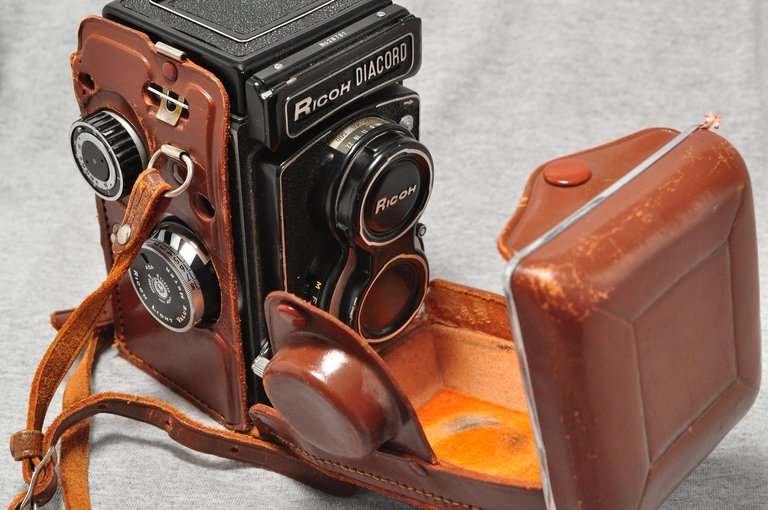

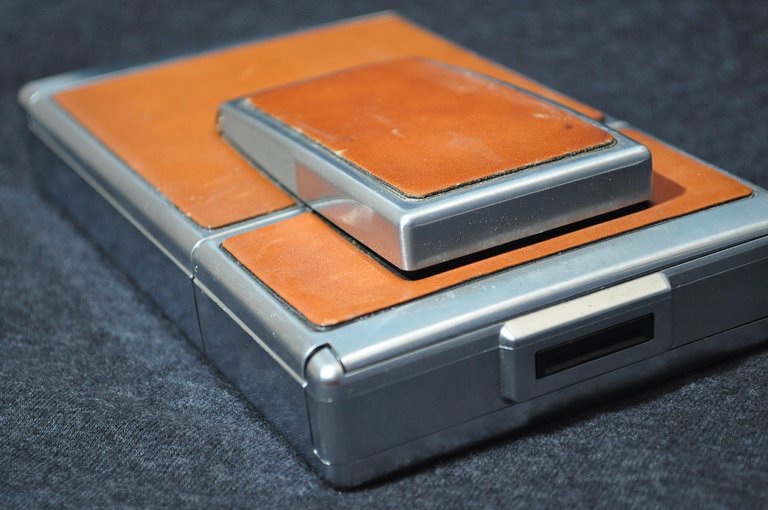
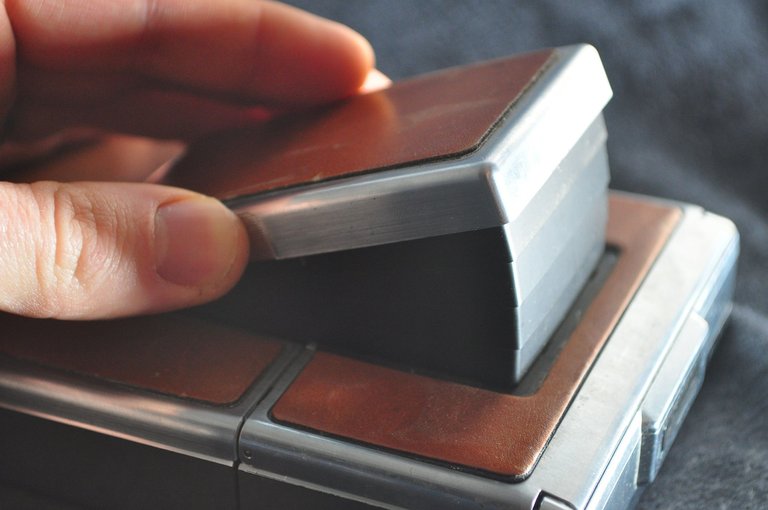
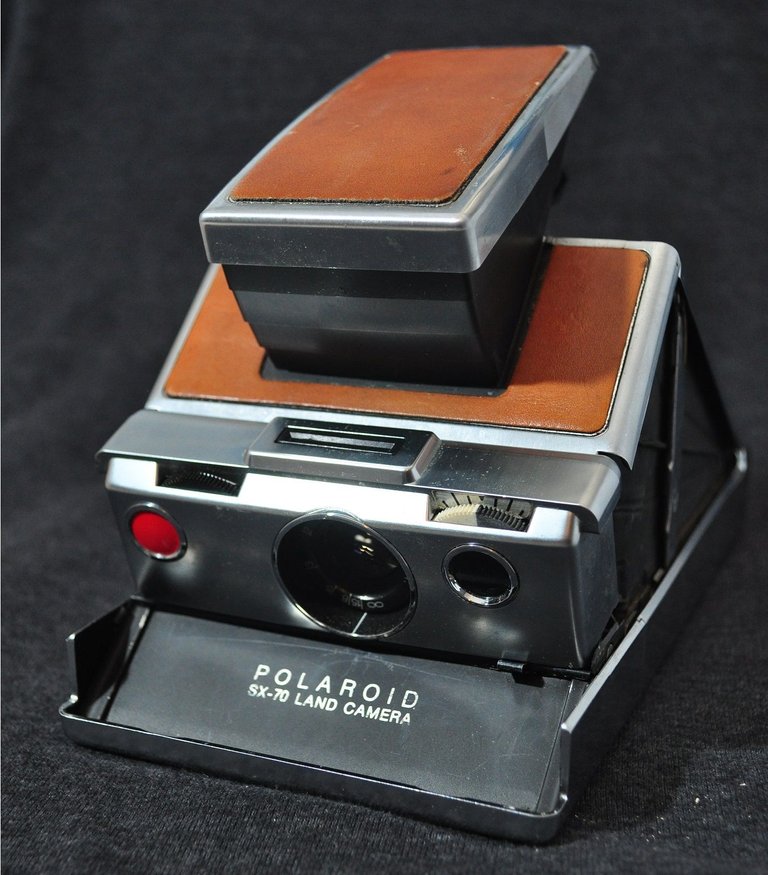

This post has been voted on from MSP3K courtesy of @thinknzombie from the Minnow Support Project ( @minnowsupport ).
Bots Information:
Join the P.A.L. Discord | Check out MSPSteem | Listen to MSP-Waves
Hi @msp3k,
It seems you got a $10.7738 upvote from @netuoso at the last minute before the payout. (12.28h) and this comment is to make everyone aware.
potential reward pool abuse. Thank you.Please follow @abusereports for additional reports of
This is a really cool writeup...and great photos of your cameras taken by another camera (cameraception?). It's cool that you still have all these and take care of them and still enjoy them, even if they're not entirely practical for daily use anymore.
Hopefully I didn't get your hopes too high for this, hahaha. This image is nothing to get excited about, but...
Cameraception!
A camera taking a picture of a camera, taking a picture of a camera, that's taking a picture of the camera taking the picture.
(Yeah, the last part's there, just outside the depth of field. It's that blur in the background: me!)
Sorry, that's all I've got. Hahaha.
Thanks Neg, I appriciate the kind comments. I'd like to have a nice little space to have them on display or something, perhaps when I create a little desk area for myself.
Now you've given me an idea with "cameraception." Stay tuned...
all of these cameras would make excellent movie props. Maybe you could rent them out as a little side business! Thank you for sharing your love of cameras. I really enjoyed reading about them!Oh the Polaroid is exquisite, @aksounder! Actually, I would argue that
Thanks for the comment Jayna! I'm glad to hear you're enjoying them. I've enjoyed putting these together, having little photo-shoots with my old cameras and digging through old negatives.
Super cool cameras! (Especially the first one- Polaroids were cool, but I never quite jumped on that bandwagon.)
As far as the megapixel conversation goes- I can't even count the number of times I've told people that megapixels aren't dick size for cameras, and even if they were, film cameras win by a landslide.
Thanks Mountain. The twin lens is my personal favorite as well.
I always laugh when general camera users talk about megapixels. It only matters if you want to be able to crop images, and on that issue I always say just shoot the image the way you want it from the beginning. The second reason you'd want a mega amount of megapixels us if you're making large prints. I don't think the common consumer camera user is making a bunch of life sized posters...
Oh, by the way, just stumbled across a new user you'd probably like to check out: @willchristiansen . He's a nature photographer and documentary filmmaker.
I'll check him out, thanks for the heads up! Looks like he's from Seattle too. Nice.
ILFORD HP5 PLUS. Ah, such memories of darkrooms. I can almost smell the chemicals.
Yes, I love that smell. I think I mentioned this in an older post I did on film, but I was so happy in highschool that my bedroom in one place I lived had lenolium floor. I turned it into a darkroom: a table in my closet held the enlarger, trays, etc. I put a gasket around my door frame, then all I had to do was throw a towel on the floor to block the light under the door and cover the windows when I would make prints. Don't worry, when I was finished I would open the door and window to cycle the air so I didn't sleep in the fumes.
The photographs of that Polaroid. So good. More of this please!
Thanks zombie! I'm curious, what about the polaroid shots grab you more than the twin lens? Is it just the camera itself?
Yes, classic cameras are pieces of art in of themselves. Thanks for the share.
Indeed they are. Thanks for reading and commenting!
Sure thing. Power to you.
Wow, awesome cameras. Love the Ricoh. Unfortunately I had to sell some of my film cameras a year or so ago, but I have maybe 3 or 4 left. When I feel creative I always take them out, it's a totally different experience to shooting digital. Thanks for sharing your cameras and thoughts :)
Thank you. That's too bad, but glad to hear you still have a few. I'll have to browse your page now and see if you happen to have any film shots posted.
You're right, shooting film is a totally different experience. But shooting film and having someone else process and print it is also a very different experience from doing it yourself. Unfortunately, if I shoot a role of medium format these days, I'll have to settle for having a photo lab process and print it for me.
Yeah I take film shots quite often, you can see some here - https://steemit.com/travel/@oen/exploring-barcelona-the-rocky-range-of-montserrat
Although some other posts are film too. I have to carry around a massive lump of metal when I travel haha But oh well. Recently I purchased an X100T so the film cameras have been sidelined for a while. Shame. Hopefully I can get back to them soon :)
Keep up the good work